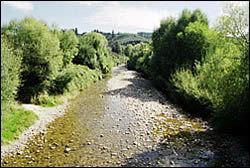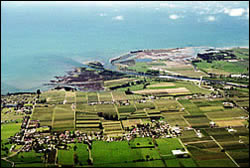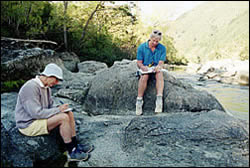Freshwater
 |
Tadmor River |
Introduction
High quality freshwater is one of New Zealands most important natural assets and a resource that is at enormous risk. Good management of water resources requires a firm understanding of the effects of adjacent land management on water quantity and quality, the equitable allocation of water for out-of-stream and in-stream uses, and potential connections between freshwater and coastal ecosystems.
Information on the holistic management of water resources for large and complicated catchments, like the Motueka, is very limited. Rainfall, geology and land use varies across the catchment therefore information collected in one area is not necessarily applicable in another.
Particular concerns have been raised over the condition of the Motueka River catchment in the last few years. Annual surveys of brown trout over the last 6 years have consistently shown that the observed number of adult trout were about one third of the numbers seen in 1985. The reasons for this decline are unclear but could relate to changes in physical habitat suitability for adult trout in the main river, spawning success in the tributaries, and/or declines in food availability.
Water allocation from the catchment is also coming under increased scrutiny. Consequently, important decisions need to be made regarding the amount of water that can be abstracted from the river without having harmful effects on aquatic life in the river.
This research will provide information to enable informed decision-making on issues that will affect freshwater resource management at large scales.
Researchable Issues
- What are the effects of natural low-flow on freshwater ecology?
- What are the effects of competing water uses on freshwater ecology?
- Does water abstraction reduce aquatic habitat value, especially at low flows?
- How does land use effect water quality and freshwater ecology?
- Does land use effect nutrient and sediment delivery to coastal ecosystems?
Research Areas
-
Cow crossings and water quality
-
Dating groundwater
Knowing some thing about the age of water in groundwater aquifers is important for managing the resource. -
Faecal bacteria in the Motueka River
-
Fine sediment: bringing the geomorphology and biology together
Suspended sediment effects on freshwater and coastal habitats. -
Flood gate design and management
-
Gravel extraction
-
Links between scientific and cultural indicators of river health
In this work we review the philosophies behind cultural and scientific monitoring of river health and compare the results from the two approaches at sites where corresponding data is available. -
Mechanisms of groundwater recharge
Understanding recharge processes of aquifers is important because many aquifers are now largely fully allocated for irrigation and continued availability of groundwater is dependent on annual recharge of these aquifers. -
Modelling water quantity and quality
-
River bank styles
-
River monitoring
A catchment–wide monitoring network is important in any catchment study. It is necessary to know the current status of water quality and river health and to use these results as baselines against which future interventions or changes can be measured. -
Sediment generation, delivery and impacts
Sediment may have a range of impacts on the ecology and habitat of both freshwater and marine ecosystems. To understand and manage these impacts it is important to determine the major sources of sediment generation as well as establish changes in riverbed characteristics important to maintenance of the trout fishery, and delivery of sediment to the marine environment. -
Sherry River Community
-
Stream health – fish
Concern over the decline in the brown trout fishery of the Motueka River in the mid 1980s has provided the context for much of the ICM research programme as well as associated pieces of research on habitat quality and fish behaviour. -
Stream health – invertebrates
How healthy is the Motueka River? To answer this question it is necessary to examine the current health of the river system and its tributaries and examine some of teh key drivers that might explain any differences. -
Stream health – productivity
-
Thalweg Mapping: A measure of habitat quality
An exciting new approach to habitat measurement is trialled -
Trout tracking
Radio tagged trout were followed to see how far they moved throughout the catchment. -
Upper Motueka water resources
Knowledge of the location and size of aquifers and the linkages between surface processes and groundwater and between the rivers and groundwater are important for making decisions on water allocation. -
Valuing water
Allocating the rights to use a potentially scarce environmental resource requires judgements to be made about the values and opportunities to be protected, and the benefits and costs of different allocation mechanisms. These judgements depend on good information including the economic costs and benefits involved. -
Water augmentation
Reports from studies looking at water storage and augmenting summer flows to meet irrigation demand.
 |
 |
,Motueka River dishcarging into Tasman Bay |
Conducting riparian river surveys |
Publications (Selection)
Presentations (Selection)
Primary Contacts:

|
Tim Davie
Email Phone: 03 372 7084 Fax: +64 (0)3 365 3194 More details» |
Institute Environment Canterbury |
Expertise Hydrology & modelling, surface water resource management |

|
Andrew Fenemor
Email Phone: 03 545 7710 More details» |
Institute Landcare Research |
Expertise ICM programme management; local liaison; resource management; hydrology and water resource management |

|
Roger Young
Email Phone: (03) 548 2319 Fax: (03) 546 9464 |
Institute Cawthron Institute |
Expertise Land/water interactions, water quality, fisheries, river health |